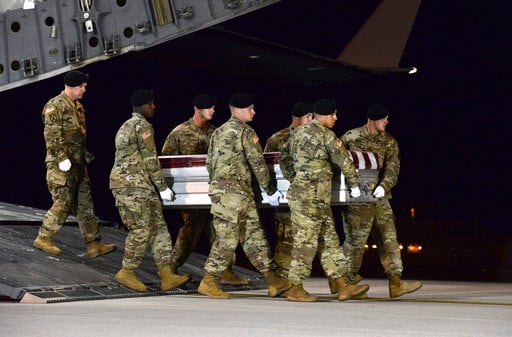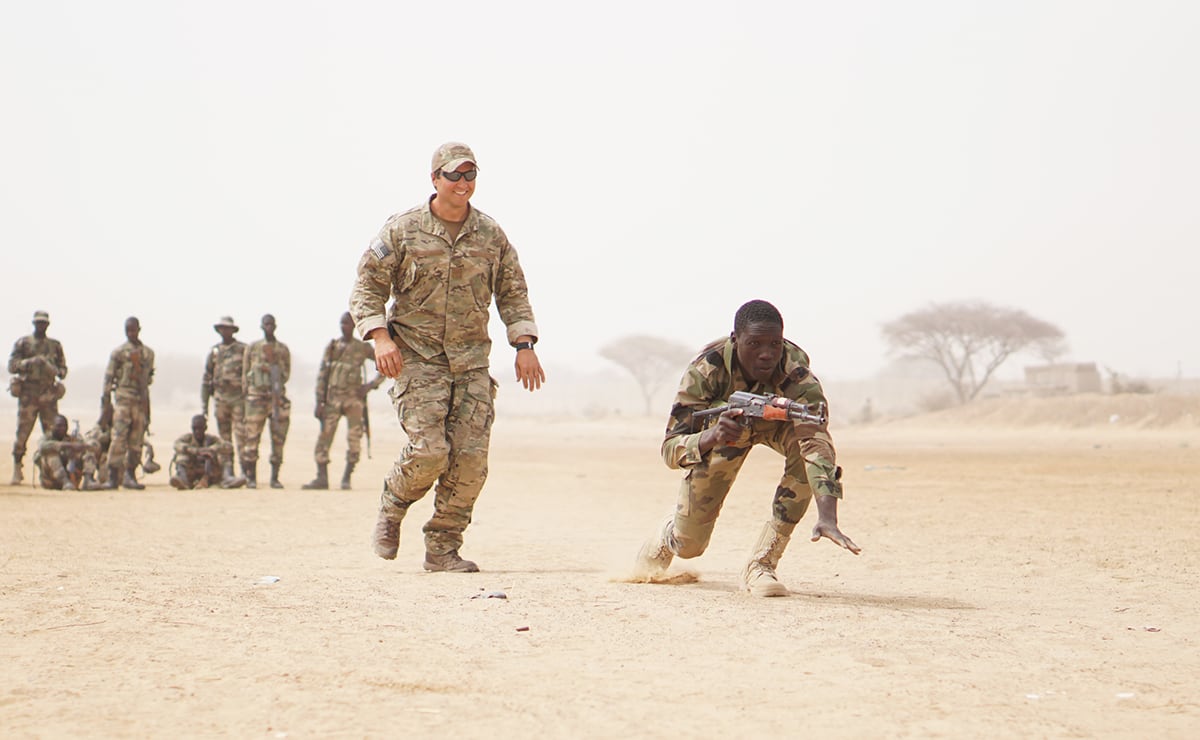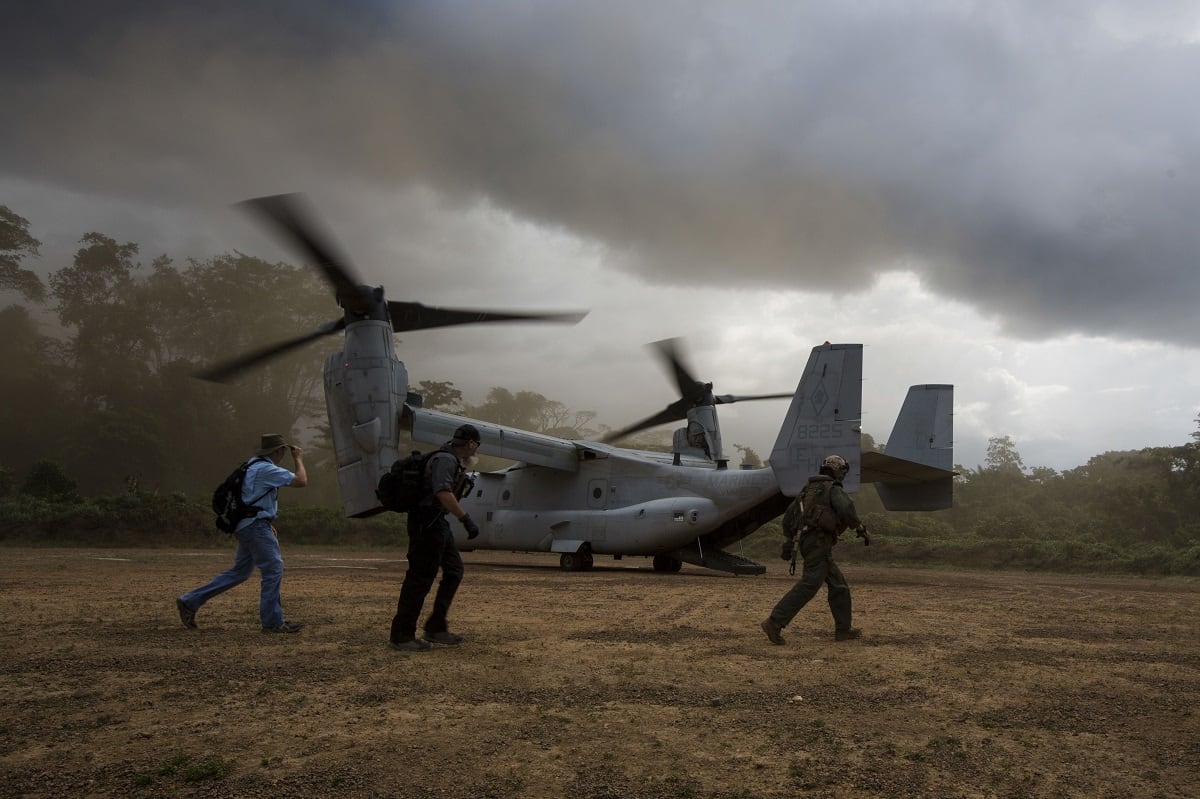In the final moments of his life, Sgt. La David Johnson was alone, evading overwhelming militant fire in Niger last October, as he ran the length of five football fields to reach the only cover in the area: a single thorny tree.
The last two friendly forces with Johnson had been killed minutes before; two Nigerien soldiers who had stayed with Johnson as their eight-vehicle convoy was ambushed by scores of enemy fighters.
Each of the eight vehicles — three U.S. vehicles and five Nigerien vehicles ― became separated from each other within minutes, in a kill zone that was thousands of yards long.
Under heavy enemy fire, the vehicles had stopped, and U.S. and Nigerien forces exited to return fire.
As enemy forces closed in, the team commander made a string of split-second decisions to have the 11 U.S. forces and approximately 30 Nigerien forces get back in their vehicles and pull back to avoid being flanked.
But the vehicles ultimately lost contact with each other and did not immediately have visibility on the forces left behind.
These details of the soldier’s final moments, along with those of Staff Sgts. Bryan Black, Jeremiah Johnson and Dustin Wright, were revealed Thursday as the Pentagon released to the media the military’s extensive review of that Oct. 4 ambush.
“There will be awards for valor,” Gen. Thomas Waldhauser. commander of U.S. Africa Command, told reporters Thursday.
RELATED

In the months since the ambush, U.S. Africa Command has conducted an extensive investigation to answer other questions that have haunted the soldiers’ families and riled Congress: What were those service members doing there, and why didn’t they have better support?

As Sgt. La David Johnson fought for his life, Black, Jeremiah Johnson and Wright were returning fire from outside the second U.S. vehicle.
Jeremiah Johnson acknowledged the order to move out with a “thumbs up,” and another team member threw a smoke grenade to give them cover to move.
RELATED

Wright began driving their vehicle slowly forward, while Black and Johnson remained outside, using the vehicle as cover to continue firing.
As Black moved slightly ahead of the vehicle, he was shot and killed by enemy fire.
Jeremiah Johnson would fall next. Badly wounded by enemy fire, he could not continue on. Wright stayed beside him, returning fire until both were killed.
La David Johnson, the special operations mechanic and driver, and two Nigeriens had been returning fire from outside his vehicle. He fired the vehicle’s M240 mounted machine gun until it ran out of bullets, then picked up an M2010 sniper rifle.
When the call came to pull back, the three were trapped. Intense incoming fire kept La David Johnson from being able to reach the driver’s seat.
So, they ran. The Nigeriens were shot; La David Johnson was the only one left. He reached the lone tree, took position and returned fire as an enemy truck with its own mounted machine gun closed in.
His body was found two days later.
In an eight-page unclassified summary released Thursday — part of the 6,000-page report — AFRICOM concluded that “individual, organizational and institutional failures ... contributed to the tragic events of Oct. 4, 2017.”
In its main findings, the report said the team had departed the night before on a mission “targeting a key member of [the Islamic State-Greater Sahara.]”
But the team, which had previously focused on train and advise missions and helping stand up Niger’s counterterrorism forces, did not have the authority to conduct that type of mission without higher level approval that was never obtained, the investigation found.
The two commanders responsible for seeking authorization ― the team commander and company commander at their advanced operating base — “inaccurately characterized the nature of the mission in the [concept of operations.]”
RELATED

Then, the base commander “approved the CONOPS based on the incorrect belief that he had the authority to do so.”
The team did not drill or rehearse the mission in advance, and at the time they departed on the mission, “no command higher than the [forward base commander] was aware the mission sought to find/fix and, if possible, capture a key member of ISIS-Greater Sahara,” the investigation found.
AFRICOM has already taken some steps in the wake of the attack, including new guidance on the planning and approval of military operations and a review of equipment requirements.
The actions of all the U.S. forces are also still under review by individual military commands for “personnel actions relevant to this incident, including ”appropriate administrative or disciplinary action.”
Tara Copp is a Pentagon correspondent for the Associated Press. She was previously Pentagon bureau chief for Sightline Media Group.




